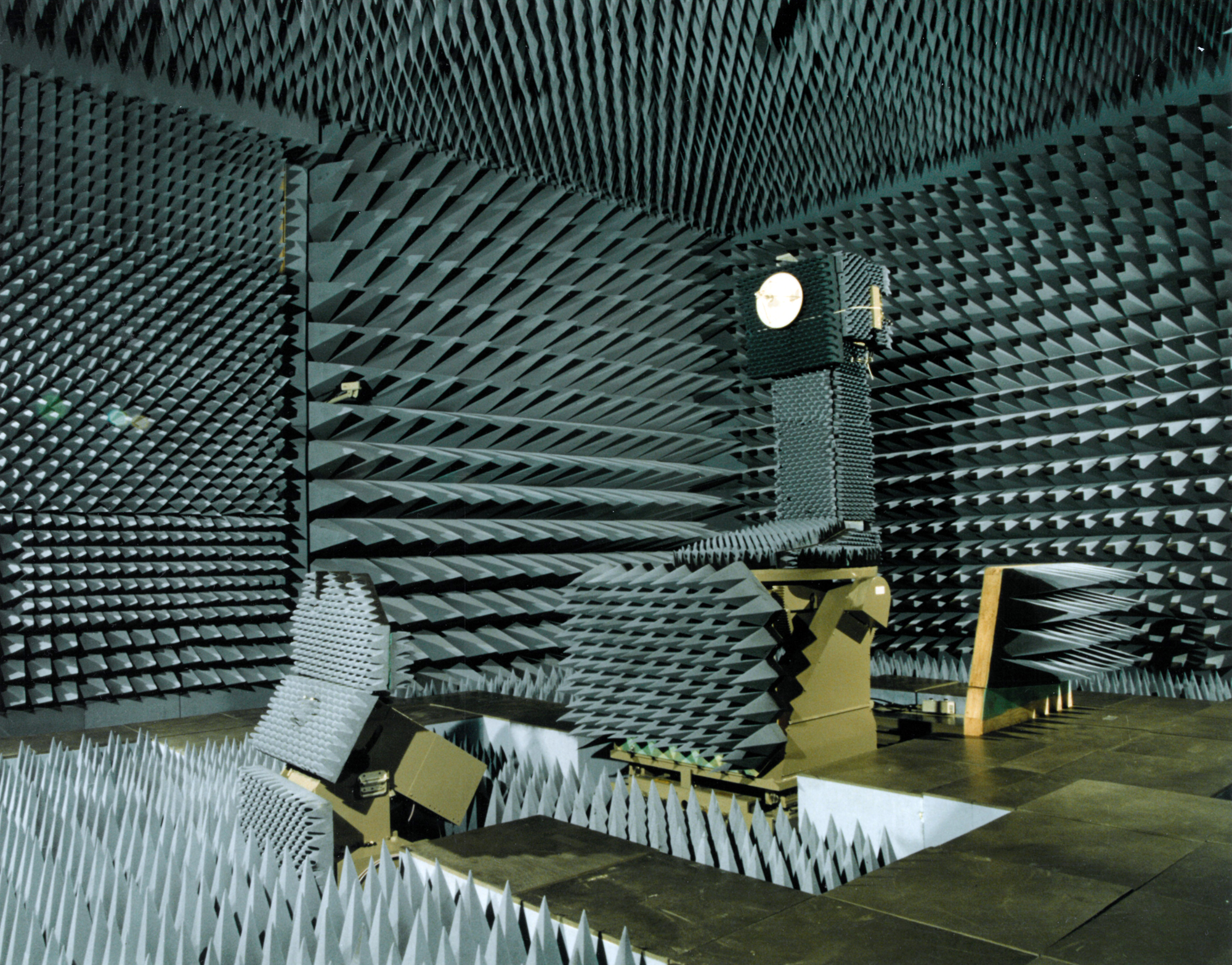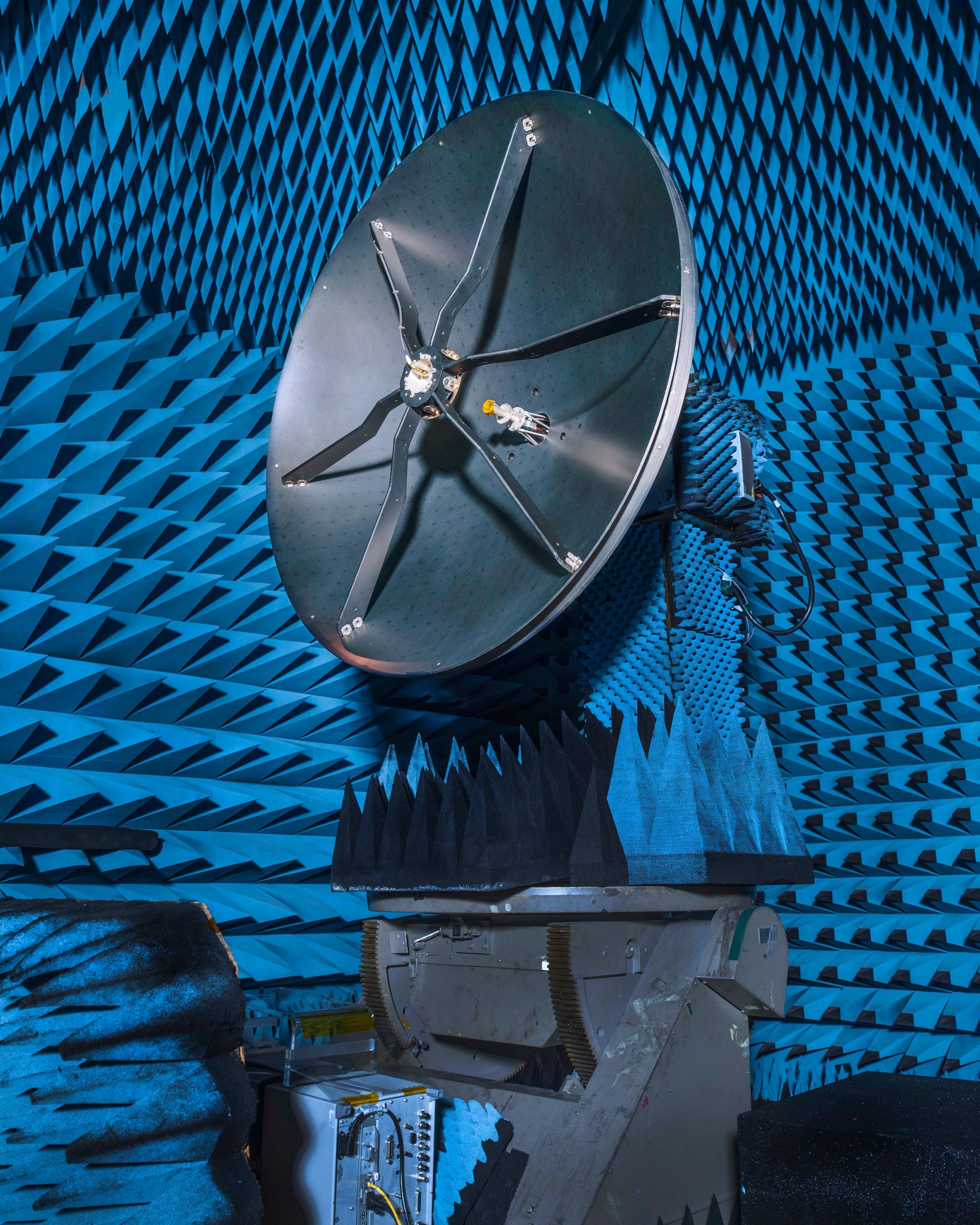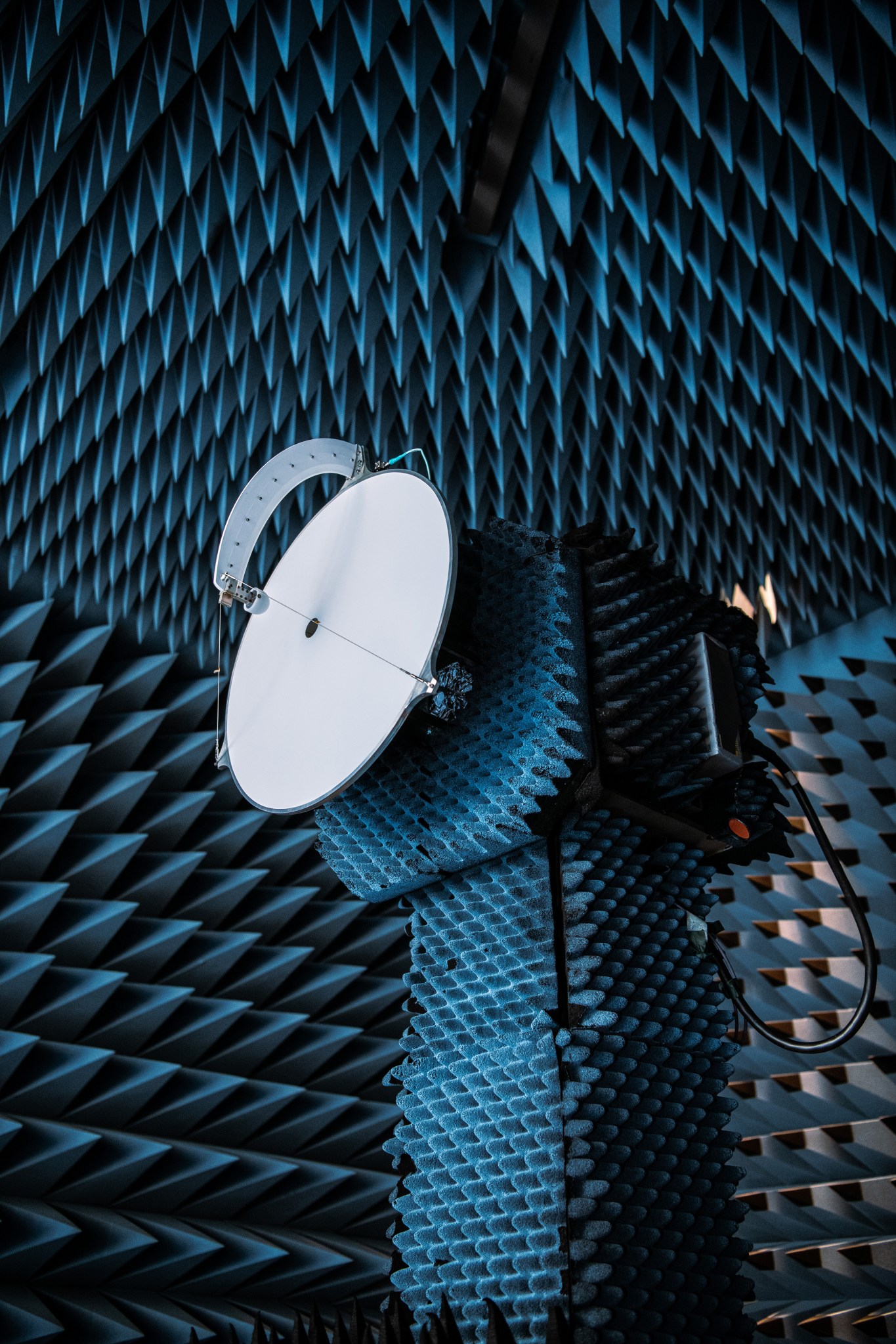NASA Goddard’s ‘Spiky’ Antenna Chamber: Signaling Success for 50 Years

Rows upon rows of cobalt-blue spires in Goddard’s antenna chamber evoke a soundproof room from a recording studio. Much like laying down tracks on a hit album, this testing facility ensures clean takes for NASA missions’ antennas and their data transmissions.

The ElectroMagnetic Anechoic Chamber, GEMAC for short, at NASA’s Goddard Space Flight Center in Greenbelt, Maryland, has been a critical proving ground for antenna technology for more than half-a-century.
NASA
On any given day, NASA’s networks may communicate with over 100 space missions. Whether the mission keeps the lines of communication open with orbiting astronauts or peers deep into the cosmos, those dozens of satellites all have one thing in common: each needs an antenna. Without one, NASA missions and their discoveries simply would not be possible.
To ensure those antennas are up to the challenges of spaceflight, for most that means rigorous testing on the ground in a simulated space environment. The Goddard ElectroMagnetic Anechoic Chamber (GEMAC) at NASA’s Goddard Space Flight Center in Greenbelt, Maryland, has been an integral antenna proving ground for more than 50 years.
‘Sound Booth’ for Space Signals
Rows upon rows of cobalt-blue spires in Goddard’s antenna chamber evoke a soundproof room or isolation booth from a recording studio. In some ways the chamber is similar, but instead of dampening sound waves, this facility blocks out radio signals and eliminates radio wave reflections inside the chamber – “anechoic” means no echoes.
Much like laying down tracks on a hit album, errant ambient noise picked up by the microphone can ruin an otherwise perfect take. The same is true with radio waves when engineers want to test a spacecraft antenna. The radio environment on Earth is “noisy”: AM and FM broadcasts, television signals, cell phones, even microwave ovens, all produce radio frequencies – RF. To simulate the relatively tranquil RF environment of space, engineers need a way to isolate antennas from all these other Earth-based radio waves when they run their tests.

Engineers at NASA’s Goddard Space Flight Center in Greenbelt, Maryland, have finished testing the high-gain antenna for the Nancy Grace Roman Space Telescope. The antenna, shown here in Goddard’s ElectroMagnetic Anechoic Chamber in January 2023, will provide the primary communication link between the Roman spacecraft and the ground.
NASA / Chris Gunn
That’s the job of those tightly packed columns of spikes lining the floors and walls. These polyurethane foam cones are microwave absorbers. They block outside interference and noise, and within the chamber’s “quiet zone” as engineers call it, they provide a reflection-free environment like the antenna will experience in space.
Antennas Put to the Test
With this radio-proof environment, engineers at Goddard can accurately measure how efficiently antennas broadcast and receive signals. If an antenna’s signal were to go in unexpected or undesired directions during flight, it could mean the loss of mission data, or even the entire spacecraft itself if a critical command were missed.
Trying to do antenna design and testing work without a chamber like this “would be like taking a calculator away from an accountant,” said Goddard engineer Ken Hersey.
As NASA’s missions (and their antennas) have increased in sophistication over time, Goddard engineers have upgraded the anechoic chamber to follow suit. Hersey was a lead designer on the most recent major overhaul, which in 1997 expanded the range of antenna frequencies that could be accommodated in tests. The chamber can even help calibrate scientific instruments, like radars and microwave radiation sensors.

The Earth Coverage Antenna for NASA’s PACE – the Plankton, Aerosol, Cloud, ocean Ecosystem missionRadio frequency testing of the PACE Earth Coverage Antenna in the ElectroMagnetic Anechoic Chamber at Goddard Space Flight Center.
NASA’s Goddard Space Flight Center / Denny Henry
Most recently, the anechoic chamber certified both the Roman Space Telescope high-gain antenna and the Earth coverage antenna for PACE – the Plankton, Aerosol, Cloud, ocean Ecosystem mission. Launching by May 2027, Roman will have a field of view at least 100 times greater than Hubble’s and help settle essential questions about dark matter and dark energy. PACE launches in January 2024 on a mission to study Earth’s air quality, ocean health, and climate change.
Once these missions take flight, their groundbreaking observations will become the latest in an ongoing legacy of discoveries made possible with help from a battery of polyurethane cones and Goddard’s anechoic antenna chamber.





